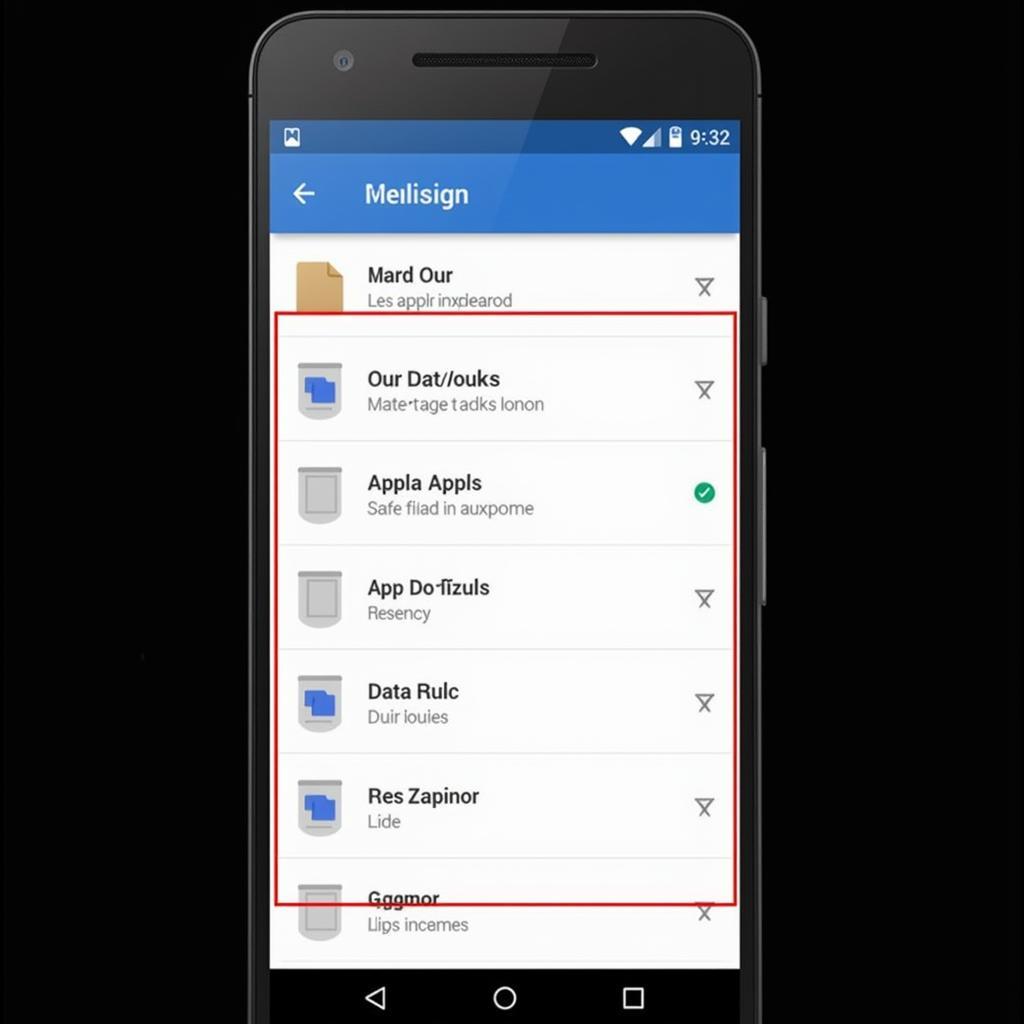Finding the exact location of an Android database file associated with a specific APK can seem like navigating a labyrinth. While it’s true that Android’s file system can be a bit intricate, understanding the basics can make the search less daunting. This article aims to shed light on this often-misunderstood aspect of the Android ecosystem, guiding you through the “where” and “why” of Android database locations.
Demystifying the APK and Its Database
Before diving into the depths of file directories, let’s clarify what APKs and databases represent in the Android world. An APK (Android Package Kit) is essentially the installation file for an app, much like a .exe file on a Windows computer. This package contains all the essential components that make the app run, including code, resources, and sometimes, a database.
Databases, in this context, are organized collections of data that apps use to store information. Think of it as a structured filing cabinet for your app’s data. This data could range from user preferences and settings to more complex data structures depending on the app’s functionality.
 Android Database Structure
Android Database Structure
Navigating the Android File System
Now, where exactly does this database reside within the vast expanse of your Android device’s storage? The answer, like many things in tech, is “it depends.” Here’s a breakdown of the typical locations and the logic behind their use:
1. Internal Storage: The Default Abode
By default, apps tend to store their databases in their designated private space within the device’s internal storage. This location is sandboxed for security reasons, meaning other apps cannot access it directly. You can visualize it like this:
/data/data/<package_name>/databases/<database_name>
/data/data/: This is the root directory for all app-specific data on your device.<package_name>: This represents the unique package name assigned to each app, likecom.example.myapp.databases: This subdirectory houses the database files.<database_name>: This is the actual name given to the database file by the app developers.
2. External Storage: For Shared Access
Some apps, particularly those dealing with large files or requiring data sharing between apps, might choose to store their databases on the device’s external storage (often an SD card). This allows for greater flexibility in terms of storage space and data accessibility. However, it’s crucial to note that storing sensitive data on external storage can pose security risks.
The path for databases on external storage can vary, but it often resembles this:
/storage/emulated/0/Android/data/<package_name>/databases/<database_name>
/storage/emulated/0/: This typically points to the emulated SD card directory.Android/data/: Similar to internal storage, this directory houses app-specific data.
 Accessing Android Database Location
Accessing Android Database Location
Why the Need to Locate the Database?
You might be wondering, “Why bother finding the database location in the first place?” Well, there are several scenarios where this knowledge proves invaluable:
- Data Recovery: If an app malfunctions or you accidentally delete data, accessing the database directly can sometimes allow you to retrieve lost information.
- App Modification: Some tech-savvy users modify app databases to unlock features, customize behavior, or even translate apps into their preferred languages.
- Security Analysis: Security researchers often analyze app databases to identify vulnerabilities or understand how an app handles sensitive user data.
Accessing the Database: A Word of Caution
While knowing the location is the first step, actually accessing and manipulating the database requires additional tools and knowledge. Typically, you would need:
- Root Access: This grants you elevated permissions on your Android device to access system files.
- Database Browser: Apps like SQLite Browser allow you to open and interact with SQLite databases, the format commonly used by Android apps.
It’s crucial to remember that tampering with app databases can lead to data loss, app instability, or even compromise your device’s security. Proceed with caution and back up your data beforehand if you choose to explore this realm.
FAQs: Addressing Common Queries
Q: Can I view the database content without root access?
A: Generally, no. Accessing an app’s private data, including its database, without root access is restricted by Android’s security model.
Q: What if I can’t find the database in the expected locations?
A: Some apps might employ non-standard storage locations or encrypt their databases for added security. In such cases, specialized tools or knowledge might be required to locate them.
Q: Are there any risks associated with modifying app databases?
A: Absolutely! Modifying app databases can lead to unpredictable behavior, data corruption, or even render the app unusable. Always proceed with caution and back up your data beforehand.
Need More Help?
For those seeking assistance with how to viet hoa apk tren may tinh yeuapk, apk downloader android, exploring the best roster apk, delving into appsgeyser apk, or understanding app like device faker apk, GameVN APK offers a wealth of resources and guides.
Navigating the world of Android databases and APKs can be complex, but with a little guidance, you can unlock a deeper understanding of how your favorite apps store and manage data. Remember to exercise caution and prioritize data security when exploring these aspects of your Android device.
Need immediate support? Contact us at Hotline: 0977693168, Email: [email protected], or visit us at Address: 219 Đồng Đăng, Việt Hưng, Hạ Long, Quảng Ninh 200000, Việt Nam. Our customer support team is available 24/7 to assist you.